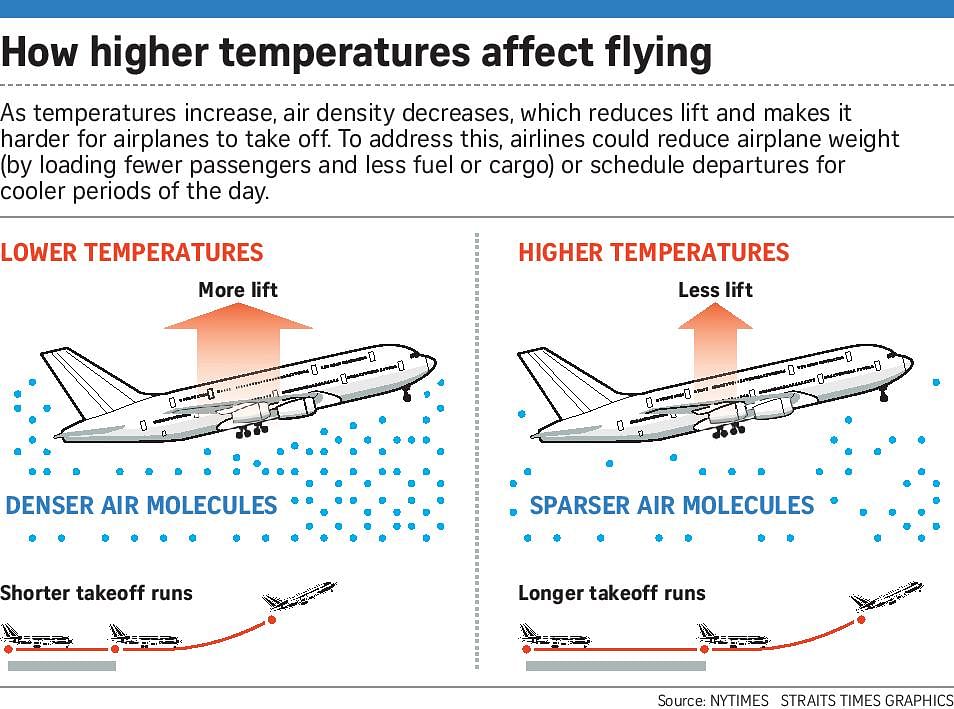LOS ANGELES • In recent days, American Airlines has been forced to cancel more than 40 flights in Phoenix, Arizona.
The reason: With daytime highs hovering around 49 deg C, it was simply too hot for some smaller jets to take off. Hotter air is thinner air, which makes it more difficult - and sometimes impossible - for planes to generate enough lift.
As the global climate changes, disruptions like these are likely to become more frequent, researchers say, potentially making air travel costlier and less predictable, posing a greater risk of injury to travellers from increased turbulence.
The problem in Phoenix primarily affected smaller jets operated by American Airlines' regional partners. "When you get in excess of (48 deg C) or higher, you're not able to take off or land," said Mr Ross Feinstein, a spokesman for American Airlines, referring to the smaller aircraft. Bigger jets like Boeing 737s and Airbus A320s have higher operating thresholds, 52 deg C and 53 deg C respectively, he said.
All three of those maximum temperatures are specific to the Phoenix airport; aircraft have different maximum operating temperatures depending on a variety of factors, including airport elevation.
Even though bigger planes were not affected, Mr Feinstein said, American Airlines gave passengers on any flight to or from Phoenix the option to change their trips.
Overall, that means more than 350 flights were potentially affected by the hot weather in Phoenix.

Aviation is a major producer of carbon dioxide, responsible for about 2 per cent of human-made emissions each year.
Researchers are just beginning to explore how climate change affects aviation and planes' ability to fly.
As there is little data available and many factors at play - aircraft design, airport size and location, as well as the weight of passengers and cargo - it can be hard to attribute any one service disruption to global warming.
High-altitude airports like those in Denver, Colorado, have thinner air by nature, so lift is even more affected by higher temperatures.
New York's La Guardia Airport, which is at sea level, has a short runway relative to other major commercial airports in the US. On particularly hot days that can be a problem: Planes might not have enough distance to achieve the speed and lift needed to get airborne.
"Typically in the hotter days of the summer, you may have to bump payload, which includes cargo and/or passengers," said Mr David Wilhelm, a senior dispatch manager at Southwest Airlines.
Reducing weight will allow a plane to take off with less lift.
In 2015, Dr Radley Horton, a research scientist at Columbia University's Earth Institute, published a joint study on the effect of extreme heat on aviation. The conclusion: More weight-restricted days and larger weight restrictions.
Already, since the 1980s, airports have seen an increasing number of weight-restricted summer days, the research found.
As global temperatures continue to rise, some of the heaviest planes on the longest flights may eventually be unable to depart during the hottest part of summer days, Dr Horton said.
Airplanes may be grounded until the air is cool and dense enough for take-off at full capacity.
He also pointed out that a no-fly window of even a few hours at a particular airport could have a ripple effect across airline operations while further squeezing airlines' already tight profit margins.
NYTIMES
